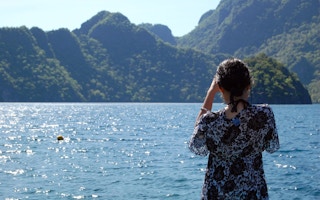Engaging with the community in research projects from the very outset ensures that research translates into meaningful real-world solutions, according to the head of the National Research Council of the Philippines (NRCP).
“This is contributing to the overall development of communities and by domino effect to the progress of the country and the wider Asean region,” NRCP Executive Director Bernardo Sepeda says.
Established in 1933 and now part of the Department of Science and Technology (DOST), the NRCP champions transdisciplinary research, involving all stakeholders from inception to disseminating the solution, which “ensures that science translates into real-world solutions for the people who need it”, according to Sepeda.
A NRCP-funded research project in the Philippine island of Siargao, for example, has positively impacted education, livelihoods, food security, eco-tourism and marine conservation, besides providing protection from typhoons and flooding.
“It has motivated the community to preserve the mangroves,” Sepeda explains during an interview with SciDev.Net.
“Our researchers collaborated with the community in gathering scientific data on the endemic species of flora and fauna to develop a holistic conservation policy.”
“
The R&D budget for 2024 is P153.3 million (US$2.71 million). It is still below 0.5 per cent of the GDP, but government funding for science research is increasing to spearhead development in the country.
Bernardo Sepeda, executive director, National Research Council of the Philippines
The project has led to the Del Carmen mangrove forest being recognised as a wetland of international importance by the government, a precursor to being listed under the Ramsar Convention.
The NRCP grant has also supported the development of educational materials and a smartphone game application to educate children and youth on Siargao’s rich biodiversity, such as understanding the habitat and behaviour of the Mindanao tree squirrel.
Research grants
The council caters to two types of research: pure basic research, which refers to fundamental research in the sciences and the humanities; and oriented basic research, which seeks new knowledge required for application and may also contribute to general scientific advancement in the process.
The usual proposals being submitted and accepted are those that forge linkages between the government, particularly local governments, academia, industry and civil society; and funding is prioritised for projects that will ensure translation and transfer of social technologies to the people.
The research grants-in-aid are only given to NRCP members. The membership has swelled from 114 members at inception to over 6,000 members today.
“NRCP receives about 140 research proposals annually, out of which only 10 per cent are accepted for funding. Our associate members can receive P2 million (US$40,000) annual funding or P6 million (US$120,000) for a three-year project, whereas regular members have no maximum limit,” says Sepeda.
The Council is funded by the government, and is responsible for allocating funds, monitoring their use and assessing their impact.
“The R&D budget for 2024 is P153.3 million (US$2.71 million),” explains Sepeda. “It is still below 0.5 per cent of the GDP, but government funding for science research is increasing to spearhead development in the country.”
Earthquakes and tsunamis
“All NRCP research projects are aimed at maximising economic and social benefits for the people, and mitigating disasters arising from volcanic eruptions, earthquakes and tsunami,” says Sepeda.
The current focus areas for research funding are sustainable communities and greening of mined areas. One example is the Greening Mined-out Areas in the Philippines NRCP-funded project.
“Our scientists have developed an efficient and cost-effective bioremediation solution, using microbes with native plant species – lahi-lahi, narra, and mangkono, to revitalise the soil in mined areas for tree planting,” says Sepeda.
“We are encouraging communities to embrace these solutions because their support is essential in any reforestation project.”
NRCP is a member of the International Science Council and Science Council of Asia.
“This provides our scientists a collaborative platform for scientific exchange and cooperation in Asia,” Sepeda explains.
“We have partnerships with organisations in the US, Australia, Japan and other countries, for example, we are partnering with Taiwan’s National Science and Technology Council in the field of health and agriculture research; and we are exploring partnership with the National Research Council of Thailand in engineering and use of artificial intelligence in disaster risk resilience,” he adds.
This article was supported by Canada’s International Development Research Centre (IDRC).
This article was originally published on SciDev.Net. Read the original article.










